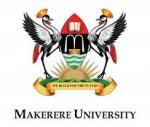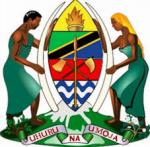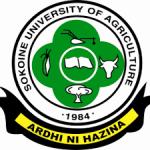Environmental determinants influencing anthrax distribution in Queen Elizabeth Protected Area, Western Uganda
Artículo de investigación publicado en PLoS ONE
18 de agosto de 2020
Bacillus anthracis, the bacteria that causes anthrax, a disease that primarily affects herbivorous animals, is a soil borne endospore-forming microbe. Environmental distribution of viable spores determines risky landscapes for herbivore exposure and subsequent anthrax outbreaks. Spore survival and longevity depends on suitable conditions in its environment. Anthrax is endemic in Queen Elizabeth Protected Area in western Uganda. Periodic historical outbreaks with significant wildlife losses date to 1950s, but B. anthracis ecological niche in the ecosystem is poorly understood. This study used the Maximum Entropy modeling algorithm method to predict suitable niche and environmental conditions that may support anthrax distribution and spore survival. Model inputs comprised 471 presence-only anthrax occurrence data from park management records of 1956–2010, and 11 predictor variables derived from the World Climatic and Africa Soil Grids online resources, selected considering the ecology of anthrax. The findings revealed predicted suitable niche favoring survival and distribution of anthrax spores as a narrow-restricted corridor within the study area, defined by hot-dry climatic conditions with alkaline soils rich in potassium and calcium. A mean test AUC of 0.94 and predicted probability of 0.93 for anthrax presence were registered. The five most important predictor variables that accounted for 93.8% of model variability were annual precipitation (70.1%), exchangeable potassium (12.6%), annual mean temperature (4.3%), soil pH (3.7%) and calcium (3.1%). The predicted suitable soil properties likely originate from existing sedimentary calcareous gypsum rocks. This has implications for long-term presence of B. anthracis spores and might explain the long history of anthrax experienced in the area. However, occurrence of suitable niche as a restricted hot zone offers opportunities for targeted anthrax surveillance, response and establishment of monitoring strategies in QEPA
Driciru M., Rwego IB., Ndimuligo SA., Travis DA., Mwakapeje ER., Craft M., Asiimwe B., Alvarez J., Ayebare S. y Pelican K.
| Queen Elizabeth National Park. Uganda Wildlife Authority. | |
 | Animal Resources and Biosecurity. Makerere University (MAK). |
| Department of Veterinary Population Medicine. College of Veterinary Medicine. University of Minnesota (UMM). | |
 | Centre for Ecological and Evolutionary Synthesis (CEES). Department of Biosciences. University of Oslo. |
 | Epidemiology and Diseases Control Section. Community Development. Ministry of Health of Tanzania. |
 | Department of Veterinary Medicine and Public Health. Sokoine University of Agriculture. |
 | Department of Medical Microbiology. College of Health Sciences. Makerere University (MAK). |
 | Centro de Vigilancia Sanitaria Veterinaria (VISAVET). Universidad Complutense (UCM). |
 | Departamento de Sanidad Animal. Facultad de Veterinaria. Universidad Complutense (UCM). |
| Wildlife Conservation Society (WCS). | |
